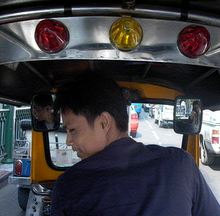
Fear the Chinese, declared my sister upon the conclusion of our recent trip to Western China. Not because they are the growing, massive, hard working nation to watch out for, but because of their ability to endure harsh, unsanitary lives on a daily basis.
As I do a quick run over the internet on Chinese toilets, it becomes apparent that many people have written about their experiences in China specifically because toilets seem to make a visit to China most memorable. And memorable it is. As I am flipping through the images I found online, the inner of my stomach squirm, and the vision and stench of the last few public toilets I forced myself into spring up unrepressed, regardless of the fact that I did stuff tissues on my face and tried to intake as little air as possible.
Against my initial inkling to publish some pictures along with this entry, I have decided to spare us the more explicit visions and my own verbal but very graphic description of my experience. Instead, here is a highly sarcastic, hilarious entry – albeit the fact that the writer should consider himself lucky not to have encountered some of the much more horrible ones these.
I can’t help wondering why so little attention is given by the Chinese to the hygiene of their toilets, although I should note that the government seems to be making some efforts by giving stars to cleanliness of public toilets, and contrasting it to the very memorable passages from Junichiro Tanizaki on the same subject:
Every time I am shown to an old, dimly lit, and, I would add, impeccably clean toilet in a Nara or Kyoto temple, I am impressed with the singular virtues of Japanese architecture. The parlor may have its charms, but the Japanese toilet truly is a place of spiritual repose. It always stands apart from the main building, at the end of a corridor, in a grove fragrant with leaves and moss. No words can describe that sensation as one sits in the dim light, basking in the faint glow reflected from the shoji, lost in mediation or gazing out at the garden. The novelist Natsume Soseki counted his morning trips to the toilet a great pleasure, ‘a physiological delight’ he called it. And surely there could be no better place to savor this pleasure than a Japanese toilet where, surrounded by tranquil walls and finely grained wood, one looks out upon blue skies and green leaves.Now I have never been to Japan to check whether or not its public toilets are as sanitary as Tanizaki mentioned, but his passages, which I first read while studying architecture and laboriously attempted to achieve in my designs, impressed upon the importance of cleanliness to create such a pleasurable, sensual, and phenomenal toilet experience twice.
As I have said there are certain prerequisites: a degree of dimness, absolute cleanliness, and quite so complete one can hear the hum of a mosquito. I love to listen from such a toilet to the sound of softly falling rain, especially if it is a toilet of the Kanto region, with its long, narrow windows at floor level; there one can listen with such a sense of intimacy to the raindrops falling from the eaves and the trees, seeping into the earth as they wash over the base of a stone lantern and freshen the moss about the stepping stones. And the toilet is the perfect place to listen to the chirping of insects or the song of the birds, to view the moon, or to enjoy any of those poignant moments that mark the change of the seasons.
Junichiro Tanizaki, In Praise of Shadows, 1977, Harper T.J. & Seidensticker, E.G., Trans., 1991: 13-14.
Why such difference in appreciation towards the act of exerting our bodily waste?




2 comments:
Really really awful I guess,more slightly can be said horrible..I ever told that to see the quality of a person or an institute...try to look from the toilet in their houses/building...
can this thought applied to China?
I think it depends on what kind of quality you're talking about. We can tell a lot about a person's or an institution's degree of attention towards sanitation (or lack thereof), and how much they are willing to invest in it, from their toilets. From toilets, we can tell a lot about the architects' attention to details and mastery of space.
Sometimes we can tell what people are thinking and campaigning about in public toilets. Sometimes we can tell what people's interests are from books and magazines they left in their toilets.
But it will too overgeneralizing to say that toilets represent the very being of a person, an institute, or a country. Chinese people have many admirable values despite their lack of attention to sanitary - which could simply be a matter of habits.
Hong Kong, for example, has gotten much cleaner since the outbreak of SAR almost a decade ago now. Its government has continued to promote hygiene and prohibit and fine spitting in public. It has made much difference - which you can tell from the difference in toilets on Hong Kong and China borders. So habits can change. China seems to start taking a more serious effort to improve the sanitation of its toilets. So hopefully this effort will make significant change as well.
Post a Comment